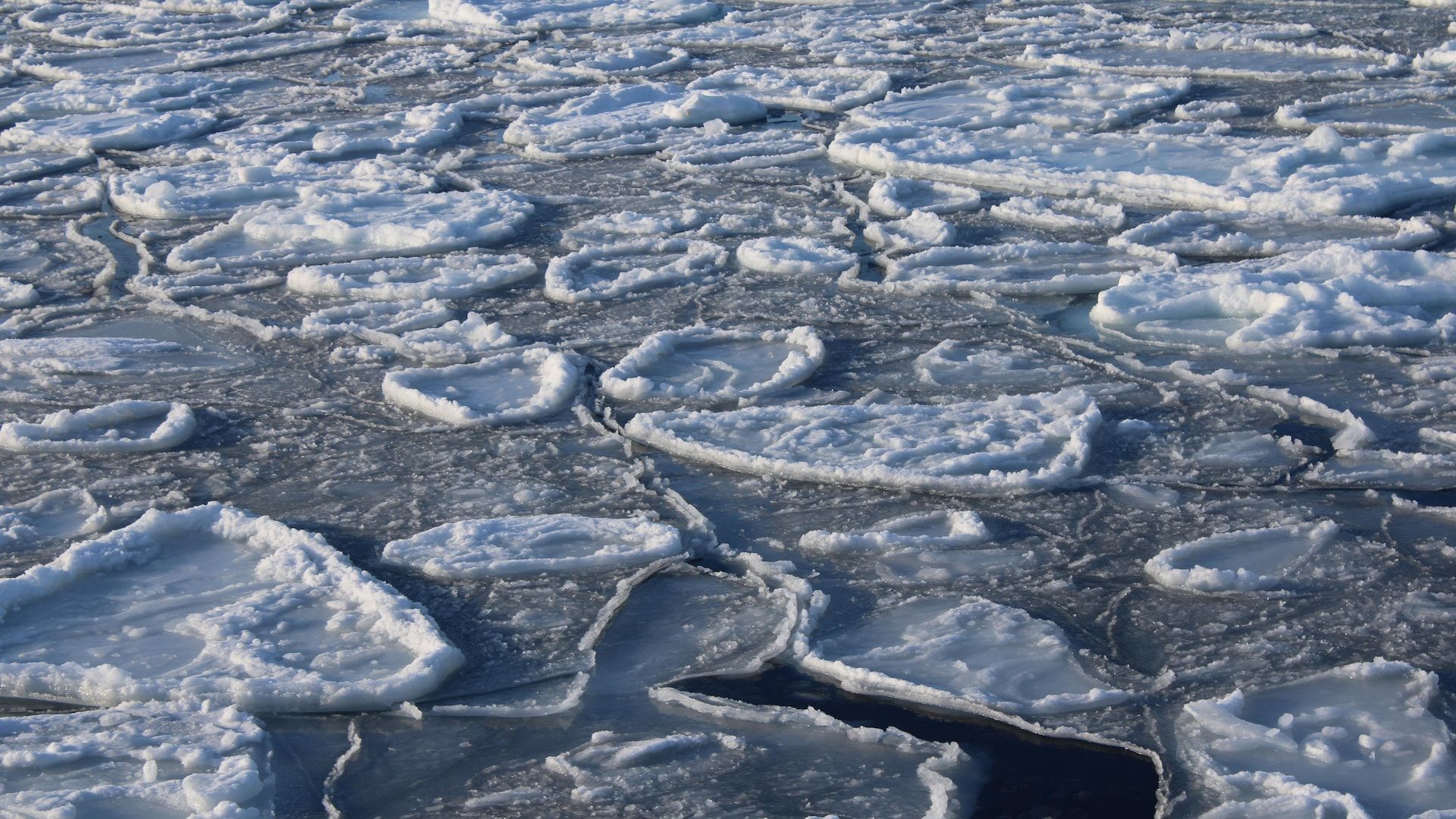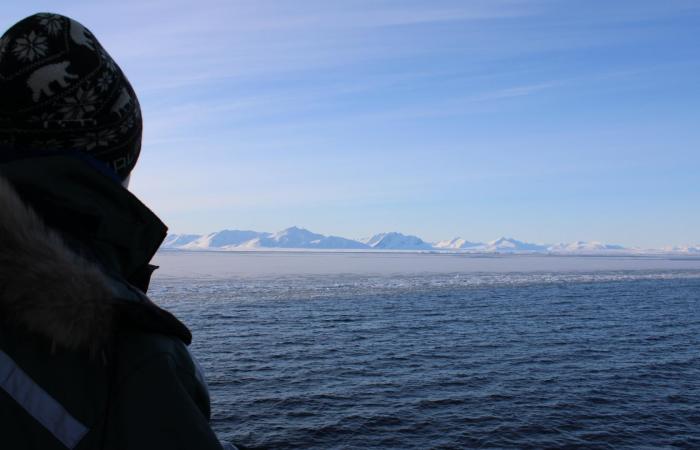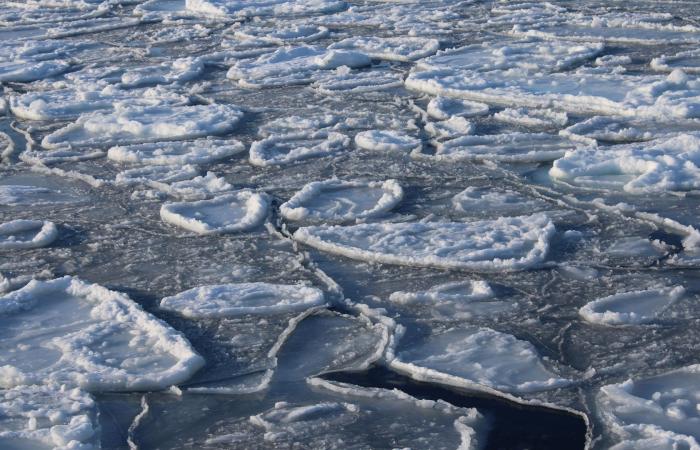It is in Svalbard, ground zero for climate change, that glaciologist Heïdi Sevestre measures and observes the extent of these changes on a daily basis. In this remote corner of the planet, the ice cream enthusiast has access to an invaluable natural laboratory.
A text from Annie-Claude Brisson
Variations in temperature and weather patterns observed in this territory halfway between Norway and the North Pole affect the rest of the world.
Svalbard is an extraordinary region, it is breathtakingly beautiful. Unfortunately, this beauty has today become the epicenter of climate change. This region and part of the ocean around Svalbard have become a region that is warming six to seven times faster than the rest of the planet.
summarizes the one who works in particular for Arctic Monitoring and Assessment Program.
Glaciologist Heïdi Sevestre analyzes the behavior of Svalbard’s glaciers. Photo: Radio-Canada/Annie-Claude Brisson
The scientist spends part of the year in Longyearbyen, the northernmost city in the world. This remote community is home to UNIS, the northernmost university. Heïdi Sevestre did her doctorate there and sometimes teaches there.
The glaciologist has access to a huge scientific playground. The Norwegian archipelago is covered with almost 60% ice. The nearest glacier is just three kilometers from the town of Longyearbyen.
When you’re a glaciologist like me, it’s truly a white paradise to be able to work here. It’s absolutely extraordinary.
The scientist from the French Alps quickly moves from research laboratories to glaciers. A facility that is the envy of several of his colleagues.
This is great for glaciologists like me. We have all types of glaciers, glaciers that reach sea level, which are confined in cirques, small ones, very large ones, very slow, very fast. We really have the whole range of glaciers that we can have on Earth, except that here, they are super accessible.
We are in a place that symbolizes climate change. It’s the fastest warming place on Earth and the world needs to hear it.
What we study here, on the glaciers, then allows us to transcribe that on the glaciers of Greenland and Antarctica. And thus, to better understand, for example, the rapid rise in sea levels.
Heïdi Sevestre compares glaciers to friends, to members of his family. Photo: Radio-Canada/Annie-Claude Brisson
The contrast is striking. Heïdi Sevestre is so small in front of the glaciers that she compares to friends, to members of her family.
Glaciers move me every day. There is no doubt. When I see them, I am truly hypnotized by their beauty, by everything they have to teach us. But I can’t help but look at them with a certain sadness, a certain suffering to see how quickly the glaciers are responding to climate change.

Svalbard allows the scientific community to study glaciers in a context of more pronounced climate change than elsewhere. Photo: Radio-Canada/Annie-Claude Brisson
An excursion on the waters of the Arctic Ocean allows us to approach the Borebreen glacier. It is not its size or its location that attracts attention, but rather its speed of movement.
He is completely changing his behavior, he is accelerating. We call it the surge glaciers. Borebreen, behind me, is moving at three meters per day. Which is extremely fast for a glacier of this size.
Heidi Sevestre indicates that the scientific community don’t fully understand what forces glaciers to accelerate
. She was also interested, during her doctorate, in the dynamics of surges glacial.
A glacier like Borebreen that accelerates, it brings a lot of ice into the oceans. We really need to understand why glaciers are accelerating and how quickly they are accelerating the rise in sea levels.
Everything that happens here influences the rest of the planet. The melting of ice actively contributes to the rise in ocean levels.
In Svalbard, permafrost stretches hundreds of meters thick. The scientist explains that greenhouse gases emanate from the melting of this permanently frozen soil.
These greenhouse gases will affect us elsewhere, whether in Canada, Europe or Asia.
The ice pack is also determining, according to Heïdi Sevestre.
It is white and reflects solar radiation. So it cools this Arctic region. The problem, if this ice floe disappears, instead we have an ocean that is very dark. The ocean absorbs heat from solar radiation very well.
The sea ice is the air conditioning of the Arctic.
As the glaciologist reports, the more this layer of ice disappears, the more it modifies the climate and generates extreme weather events
.
When we have heat waves, when we have very hot, very cold, very dry, very humid moments, today, we realize that it is linked, in part, to the Arctic sea ice.

Because of their shape, these pieces of ice are called pancake ice cream. Photo: Radio-Canada/Annie-Claude Brisson
Heidi Sevestre summarizes the situation simply and perhaps even harshly. Everyone’s future depends on the health of Arctic ecosystems
she says.
Share your knowledge with others
Heidi Sevestre divides her time between field research, expeditions and scientific communication. She makes it a point to share her knowledge whenever possible. She speaks in front of various audiences, in the media, and participates in several documentaries. It is unequivocal: science must go beyond the realm of experts.
Science has no impact if it is not communicated.
Heidi Sevestre is also delighted to see more and more of her peers sharing their science to the greatest number
. She teaches what she knows and masters, but also the love of scientific communication.
Today, we really need the general public, politicians and businesses to understand what is happening. If we lose the Arctic as it is today, the impacts here will be absolutely terrible.
A wind of hope
Despite a lucid speech regarding the state of the Arctic, a bit of hope remains for Heidi Sevestre. She speaks of Svalbard as a test region for action against climate change. She cites as an example the closure of the Longyearbyen coal mine planned for 2025. The town was, until recently, powered by a coal-fired power plant. Instead of coal, we are developing new energies
.
We are beginning to understand that investing in science is investing in the future, she rejoices. In the place that is warming the fastest on Earth, we are undergoing this transformation, this mutation.
Beyond the Arctic Circle, where global warming is more sustained than elsewhere on the planet, she hopes that her voice, her message, will cross the freezing waters of the Arctic.
This report was produced thanks to a grant from the Fonds québécois en journalism international.









